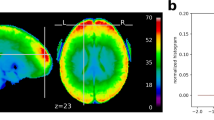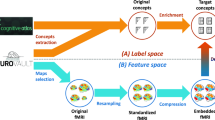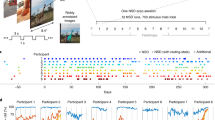Abstract
After more than a decade of collecting large neuroimaging datasets, neuroscientists are now working to archive these studies in publicly accessible databases. In particular, the fMRI Data Center (fMRIDC), a high-performance computing center managed by computer and brain scientists, seeks to catalogue and openly disseminate the data from published fMRI studies to the community. This repository enables experimental validation and allows researchers to combine and examine patterns of brain activity beyond that of any single study. As with some biological databases, early scientific, technical and sociological concerns hindered initial acceptance of the fMRIDC. However, with the continued growth of this and other neuroscience archives, researchers are recognizing the potential of such resources for identifying new knowledge about cognitive and neural activity. Thus, the field of neuroimaging is following the lead of biology and chemistry, mining its accumulating body of knowledge and moving toward a 'discovery science' of brain function.
This is a preview of subscription content, access via your institution
Access options
Subscribe to this journal
Receive 12 print issues and online access
$209.00 per year
only $17.42 per issue
Buy this article
- Purchase on Springer Link
- Instant access to full article PDF
Prices may be subject to local taxes which are calculated during checkout


Ivelisse Robles
Similar content being viewed by others
References
Raichle, M.E. Cerebral blood flow and metabolism. Ciba. Found. Symp. 85– 96 (1975).
Roy, C.S. & Sherrington, C.S. On the regulation of blood supply of the brain. J. Physiol. 11, 85– 108 (1890).
Phelps, M.E., Hoffman, E.J., Huang, S.C. & Kuhl, D.E. Positron tomography: in vivo autoradiographic approach to measurement of cerebral hemodynamics and metabolism. Acta. Neurol. Scand. Suppl. 64, 446– 447 (1977).
Posner, M.I. & Desimone, R. Beyond images. Curr. Opin. Neurobiol. 8, 175– 177 (1998).
Richeson, J.A. et al. An fMRI investigation of the impact of interracial contact on executive function. Nat. Neurosci. 6, 1323– 1328 (2003).
Goel, V. & Dolan, R.J. The functional anatomy of humor: segregating cognitive and affective components. Nat. Neurosci. 4, 237– 238 (2001).
Buckner, R.L., Snyder, A.Z., Sanders, A.L., Raichle, M.E. & Morris, J.C. Functional brain imaging of young, nondemented, and demented older adults. J. Cogn. Neurosci. 12, 24– 34 (2000).
Simpson, J.R. et al. The emotional modulation of cognitive processing: an fMRI study. J. Cogn. Neurosci. 12, 157– 170 (2000).
Benson, D.A., Karsch-Mizrachi, I., Lipman, D.J., Ostell, J. & Wheeler, D.L. GenBank. Nucleic Acids Res. 31, 23– 27 (2003).
Berman, H.M. et al. The Protein Data Bank. Acta Crystallogr. D Biol. Crystallogr. 58, 899– 907 (2002).
Collins, F.S. & Mansoura, M.K. The human genome project. Cancer 91, 221– 225 (2001).
Yarmush, M.L. & Jayaraman, A. Advances in proteomic technologies. Annu. Rev. Biomed. Eng. 4, 349– 373 (2002).
Van Horn, J.D. et al. The functional magnetic resonance imaging data center (fMRIDC): the challenges and rewards of large-scale databasing of neuroimaging studies. Philos. Trans. R. Soc. Lond. B Biol. Sci. 356, 1323– 1339 (2001).
Benson, D.A. et al. GenBank. Nucleic Acids Res. 30, 17– 20 (2002).
Berman, H.M. et al. The Protein Data Bank. Nucleic Acids Res. 28, 235– 242 (2000).
Wlodawer, A. et al. Immediate release of crystallographic data: a proposal. Science 279, 302 (1998).
Sussman, J.L. Protein Data Bank deposits. Science 282, 1991 (1998).
Anonymous (Opinion). Rules of genome access. Nature 404, 414 (2000).
Cozzarelli, N.R. UPSIDE: Uniform Principle for Sharing Integral Data and Materials Expeditiously. Proc. Natl. Acad. Sci. USA 101, 3721– 3722 (2004).
Cech, T.R. Sharing Publication-Related Data and Materials: Responsibilities of Authorship in the Life Sciences (The National Academies Press, Washington D.C., 2003).
Shepherd, G.M. Supporting databases for neuroscience research. J. Neurosci. 22, 1497 (2002).
Van Essen, D.C. Windows on the brain: the emerging role of atlases and databases in neuroscience. Curr. Opin. Neurobiol. 12, 574– 579 (2002).
Toga, A. Neuroimaging databases: the good, the bad, and the ugly. Nat. Rev. Neurosci. 3, 302– 309 (2002).
Koslow, S.H. Should the neuroscience community make a paradigm shift to sharing primary data? Nat. Neurosci. 2, 863– 261 (2000).
Fox, P. & Lancaster, J. Mapping context and content: the BrainMap model. Nat. Rev. Neurosci. 3, 319– 321 (2002).
Cover, T.M. & Thomas, J.A. Elements of Information Theory (ed. Schilling, D. L.) (Wiley, New York, 1991).
Van Horn, J.D. & Gazzaniga, M.S. Maximizing information content in shared neuroimaging studies of cognitive function. Databasing the Brain: From Data to Knowledge (eds. Koslow, S.H. & Subramanian, A.) (John Wiley and Sons, New York, in press).
Noy, N.F. & Klein, M. Ontology evolution: not the same as schema evolution. Technical Report SMI-2002-0926, Stanford Medical Informatics (2002).
Oliver, D.E. et al. Ontology development for a pharmacogenetics knowledge base. Pac. Symp. Biocomput., 65– 76 (2002).
Berners-Lee, T., Hendler, J. & Lassila, O. The semantic web: a new form of web content that is meaningful to computer will unleash a revolution of new possibilities. Sci. Am., 284, 34– 43 (2001).
Van Horn, J.D. et al. The fMRI data center: software tools for neuroimaging data management, inspection, and sharing. A Practical Guide to Neuroscience Databases and Associated Tools (ed. Kotter, R.) 221– 235 (Kluwer, Amsterdam, 2002).
Mirsky, J.S., Nadkarni, P.M., Healy, M.D., Miller, P.L. & Shepherd, G.M. Database tools for integrating and searching membrane property data correlated with neuronal morphology. J. Neurosci. Methods 82, 105– 121 (1998).
Ascoli, G.A., Krichmar, J.L., Scorcioni, R., Nasuto, S.J. & Senft, S.L. Computer generation and quantitative morphometric analysis of virtual neurons. Anat. Embryol. (Berl.) 204, 283– 301 (2001).
Insel, T.R., Volkow, N.D., Li, T.-K., Battey, J.F. & Landis, S.C. Neuroscience networks: data-sharing in an information age. PLoS Biol. 1, 9– 11 (2003).
Mechelli, A., Gorno-Tempini, M.L. & Price, C.J. Neuroimaging studies of word and pseudoword reading: consistencies, inconsistencies, and limitations. J. Cogn. Neurosci. 15, 260– 271 (2003).
Ishai, A., Ungerleider, L.G., Martin, A. & Haxby, J.V. The representation of objects in the human occipital and temporal cortex. J. Cogn. Neurosci. 12, 35– 51 (2000).
Toni, I. et al. Multiple movement representations in the human brain: an event-related fMRI study. J. Cogn. Neurosci. 14, 769– 784 (2002).
Kable, J.W., Lease-Spellmeyer, J. & Chatterjee, A. Neural substrates of action event knowledge. J. Cogn. Neurosci. 14, 795– 805 (2002).
Rypma, B., Berger, J.S. & D'Esposito, M. The influence of working-memory demand and subject performance on prefrontal cortical activity. J. Cogn. Neurosci. 14, 721– 731 (2002).
Foster, I. The grid: computing without bounds. Sci. Am. 288, 78– 85 (2003).
Lloyd, D. Functional MRI and the study of human consciousness. J. Cogn. Neurosci. 14, 818– 831 (2002).
Carlson, T.A., Schrater, P. & He, S. Patterns of activity in the categorical representations of objects. J. Cogn. Neurosci. 15, 704– 717 (2003).
Greicius, M.D., Srivastava, G., Reiss, A.L. & Menon, V. Default-mode network activity distinguishes Alzheimer's disease from healthy aging: evidence from functional MRI. Proc. Natl. Acad. Sci. USA published online March 15 (2004).
Reiman, E.M. et al. Functional brain abnormalities in young adults at genetic risk for late-onset alzheimer's dementia. Proc. Natl. Acad. Sci. USA 101, 284– 289 (2004).
Ramnani, N. et al. Exploring brain connectivity: a new frontier in systems neuroscience. Trends Neurosci. 25, 496– 497 (2002).
Horwitz, B., Tagamets, M.A. & McIntosh, A.R. Neural modeling, functional brain imaging, and cognition. Trends Cogn. Sci. 3, 91– 98 (1999).
Buchel, C., Coull, J.T. & Friston, K.J. The predictive value of changes in effective connectivity for human learning. Science 283, 1538– 1541 (1999).
Arbib, M.A., Billard, A., Iacoboni, M. & Oztop, E. Synthetic brain imaging: grasping, mirror neurons and imitation. Neural Net. 13, 975– 997 (2000).
Mechelli, A., Price, C., Noppeney, U. & Friston, K. A dynamic causal modelling study on category effects: bottom-up or top-down mediation? J. Cogn. Neurosci. 15, 925– 934 (2003).
Friston, K.J., Harrison, L. & Penny, W. Dynamic causal modelling. Neuroimage 19, 1273– 1302 (2003).
Liou, M., Su, H.-R., Lee, J.-D. & Cheng, P.E. Bridging functional MR images and scientific inference: reproducibility maps. J. Cogn. Neurosci. 15, 934– 945 (2003).
Hood, L. Leroy Hood expounds the principles, practice and future of systems biology. Drug Discov. Today 8, 436– 438 (2003).
Beltrame, F. & Koslow, S.H. Neuroinformatics as a megascience issue. IEEE Trans. Inf. Technol. Biomed. 3, 239– 240 (1999).
Koslow, S.H. Opinion: Sharing primary data: a threat or asset to discovery? Nat. Rev. Neurosci. 3, 311– 313 (2002).
Martone, M.E., Gupta, A. & Ellisman, M.H. e-Neuroscience: challenges and triumphs in integrating distributed data from molecules to brains. Nat. Neurosci. 7, 467– 472 (2004).
Brett, M., Johnsrude, I.S. & Owen, A.M. The problem of functional localization in the human brain. Nat. Rev. Neurosci. 3, 243– 249 (2002).
Talairach, J. & Tournoux, P. Co-Planar Stereotactic Atlas of the Human Brain (Thieme, New York, 1988).
Friston, K.J. et al. Analysis of fMRI time-series revisited. Neuroimage 2, 45– 53 (1995).
Druzgal, T.J. & D'Esposito, M. Dissecting contributions of prefrontal cortex and fusiform face area to face working memory. J. Cogn. Neurosci. 15, 771– 784 (2003).
Acknowledgements
The fMRI Data Center is supported by the National Science Foundation (BCS-9978166), the William M. Keck Foundation, and the National Institute of Mental Health Human Brain Project.
Author information
Authors and Affiliations
Corresponding author
Ethics declarations
Competing interests
The authors declare no competing financial interests.
Rights and permissions
About this article
Cite this article
Horn, J., Grafton, S., Rockmore, D. et al. Sharing neuroimaging studies of human cognition. Nat Neurosci 7, 473–481 (2004). https://doi.org/10.1038/nn1231
Published:
Issue Date:
DOI: https://doi.org/10.1038/nn1231
This article is cited by
-
Editorial: On the Economics of Neuroscientific Data Sharing
Neuroinformatics (2023)
-
Publication Bias in Neuroimaging Research: Implications for Meta-Analyses
Neuroinformatics (2012)
-
Large-scale automated synthesis of human functional neuroimaging data
Nature Methods (2011)
-
SynapticDB, Effective Web-based Management and Sharing of Data from Serial Section Electron Microscopy
Neuroinformatics (2011)
-
Domain-Specific Data Sharing in Neuroscience: What Do We Have to Learn from Each Other?
Neuroinformatics (2008)



